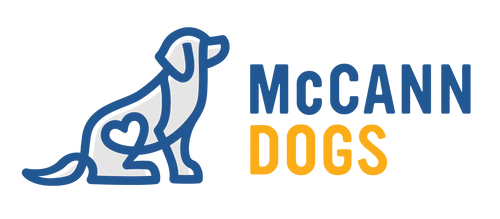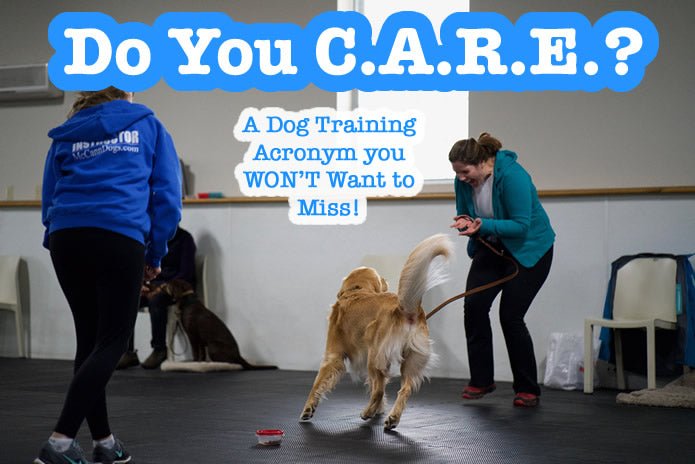“Success is never owned, it is rented, and the rent is due every day.” — Rory Vaden
I love this quote by Rory Vaden. It fits training a dog so well, how could we possibly think about it any differently now that we've thought of it in that context? I have to put in effort EVERY day in order to have success. Right! Got it.....
Except....
How does one measure success. Often as humans, we can only focus on the end stage, the BIG picture - the SUCCESS, and we think about the final product as our measure of success. This often leaves us throwing our hands up in frustration when we don't achieve it overnight or when we're confused about how to get from A to Z?
What about the other 24 stepping stone letters?
Think about dropping a child off for their first day of Kindergarten. If the only measure of success is a University Degree, you'll feel like a failure pretty quickly. So let's break things down into bite sized chunks of information and what better way to do that than with an acronym?
I love acronyms and here is another good one for remembering what's important when working with your dog: Your role in helping your dog learn is to C.A.R.E.
Be:
C - Consistent
A - Attentive
R - Realistic
E - Effective
These 4 ingredients are your stepping stones to Success!
C - Consistent
In dog training, the word of the day is almost always "consistency". All day, every day - consistency is key!
If you've ever asked a dog professional anything about teaching dogs, you've likely had the word consistency thrown at you a time or two (or 20 ;o), but often consistency and how to apply it to dogs is misunderstood.
To be consistent means "acting or done in the same way over time, especially so as to be fair or accurate."
Perfect.
Consistency is what will help your dog rehearse the things you want and not the things you don't. Your words, actions and intentions must all be consistent if your dog is to learn.
Consistency in your training messages and consistency in their experiences.
As an example, when you take your dog for a walk, here are a few things you might think about to make that walk work in your favour. It's important to present a consistent set of expectations for your dog.
Things like:
-How do you leave the house?
-What commands are you planning to use?
-Does the dog understand the skill you're planning to work without distractions?
-What was the last walk like? What would you keep/change?
-What are your plans for this walk?
A minute of planning can go a long way to improving consistency.
As humans, we can be very fluid. Our thoughts and feelings can change from one day to the next depending on emotions and circumstances. If one day you start your walk with control and attention from your dog and the next day you're rushed and you allow them to drag you out the door, your dog will be confused and their behaviour will revert to what is rewarding for them.
That will likely be dragging you out the door.....
If one day you are wearing "comfy" clothes and don't care if your dog jumps on you and the next day, you're dressed up and the dog jumping on you is upsetting, your dog will be confused.
Consistency in our actions is key if we are to hope our dogs will learn. Presenting information in a way that allows our dogs to learn and to predict what is expected will go a long way towards our success.
A - Attentive
We talk a lot about supervision and management, but there's still confusion about this one. We must be attentive to our dogs if I expect them to learn how to make good choices.
We want our dogs to enjoy freedoms, but we also want them to be good dogs - not pee in the house or tear apart the garbage. Again, this is where the first day of kindergarten often leads us directly to our University exams.... There is a lot of learning skipped in between in an effort to get to the finish line.
I often think of this in terms of head VS heart.
In my heart, I don't want to put my dog in their crate. Surely they would be happier out loose in the house. Then my head kicks in and reminds me that my end goal of having a well-behaved dog in the house, whether I'm home or not, may be derailed if I allow him freedom before he's ready. He needs a solid foundation of understanding before he's ready for the big test of freedom.
Freedom first is like trying to learn calculus without basic math.... Your success will be limited because your understanding is limited.
Dogs need to understand the rules before we can expect them to follow them. If they are still young enough to test their environment, you'd better make sure you are attentive to them so you can redirect when they investigate something new.
Dogs are opportunistic scavengers. Their instincts will tell them to explore and find things that will help their survival or add to their fun. That doesn't always align with what we want them to learn.
Don't be in a rush to afford them freedom. Make sure they are ready for it first!
R - Realistic
Be realistic about what your dog knows.
Every session, we see people in class visibly confused by their dogs actions. The line, "he does it at home" is a well known one around dogs.
That's because it's true!
We know he does it at home!!!!
We have the same frustrations with our own dogs!
Dogs don't generalize like we do. In order to habituate a cue, we need to repeat it many times over many different locations and with many different distractions.
Don't let your dog's inability to perform a skill you know they've done perfectly before throw you for a loop. They will do what you want them to do once you've been able to repeat that skill in many different scenarios.
Lather, rinse and repeat... and then do it again somewhere new!
E - Effective
In order for training to work, it has to be effective. There are many, many (many ;o) different paths to the same place and lots of those paths will take you to your destination, but some will lead you off in entirely different directions or take you very quickly to a dead end.
Don't panic.
Just try something else.
Every dog is different!
There is no accurate formula to the perfect dog as a one size fits all solution. Anyone who tries to convince you that they have the ONE secret to training dogs is simply a good marketer. Hopefully, they are just as good at training dogs! 😉
Your best tool when working with a dog is big toolbox. The best thing you can do for your dog is honestly assess whether a training method is working. If you can identify reasonable and realistic results you'll have an easier time assessing whether you should stay the course or try a new tactic.
Don't limit your options if what you're doing isn't working.
Don't give up because you think your dog is different or stubborn or......
Dog training is far from linear.
Find another way. You'll get there.
As always,
Happy Training!
~Shannon

